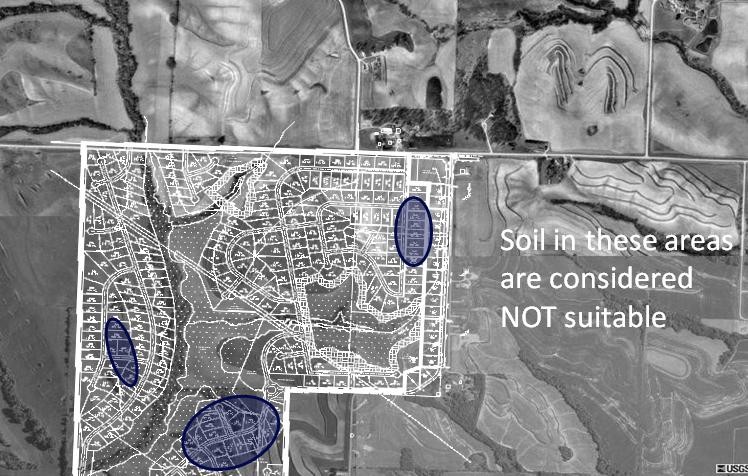This is adapted from a presentation by Alf Durnie, Administrator, Private Sewage Systems, Alberta Municipal Affairs, at the June 8 workshop on Wicked Problems in Natural Resources and Land-use.
Each speaker on the panel for the session on Rural Subdivision Wastewater Treatment as a Wicked Problem was asked to address:
- What we know
- What we don’t know
- What we need to make better decisions
Here is Alf Durnie’s summary:
What We Know
Options for Rural Wastewater Treatment:
- Sewage holding tanks – pump and haul
- Private sewage system discharge to soil (septic fields, mounds, etc.)
- Larger communal private sewage system soil based discharge and treatment.
- Municipal wastewater collection and treatment system.
Planning choices have implications on the effectiveness of the proposed sewage system:
- Density of planned development.
- Does the sewage system proposed require lower density than is desired by overall planning goals?
- Development density required by sewage system type affects other servicing costs.
- Receiving environment’s capacity and sensitivity.
- Level of wastewater treatment achieved.
Planning considerations for each sewage treatment option:
-
Sewage holding tanks (pump and haul):
- Where will the sewage go?.
- Cost of hauling sewage and energy used.
-
Impact on municipal infrastructure:
- Municipal sewage facility receiving capacity
- Impact of increased traffic on roads
- Hauling limitations during road ban
- Impact may extend outside originating municipality
-
Private sewage system discharge to soil (septic fields, mounds, etc.)
-
Suitability and receiving capacity of soil for private sewage systems:
- at each site
- on the subdivision scale
- At the density proposed
- Impact of added sewage effluent to near surface ground water table
- Treatment capacity of soil
- Capacity and sensitivity of receiving environment – nutrient loading on surface waters and groundwater under direct influence of surface waters (GWUDI).
- Effective management and maintenance is difficult to ensure.
-
Suitability and receiving capacity of soil for private sewage systems:
-
Larger soil based communal onsite sewage systems - suitability considerations:
- Suitability and receiving capacity of soil for private sewage systems
- on the subdivision scale
- at the wastewater volume generated
- Impact of added sewage effluent to near surface ground water table
- Treatment capacity of soil
- Capacity and sensitivity of receiving environment – nutrient loading on surface waters and GWUDI.
- Effective management and maintenance can be achieved with involvement of municipality.
- Higher treatment levels can achieved and maintained.
-
Municipal wastewater collection and treatment system:
- Typically requires a suitable discharge location or receiving stream. Not always available.
- Sensitivity and capacity of receiving environment.
- Initial capital cost may be higher.
- Effective and consistent treatment is achieved by management and operation.
-
Planning decisions drive the selection criteria that leads to a specific sewage treatment system:
- Selection of the suitable system must be made at time of proposing the development and subdividing land.
- Municipality has the key role at that point in considering the long term suitability of the proposed method of wastewater management.
- Onsite soil based wastewater treatment systems are not always suitable for a site or subdivision.
- Safe, effective and sustainable systems are the goal.
- A model process for considering the suitability of private sewage in a proposed subdivision has been developed for use by municipalities. AAMDC runs training sessions.
Uncertainties Now (What We Don’t Know)
- The standards for private sewage system design look at one lot at a time. It does not anticipate varying development density and sensitivity of the receiving environment.
- Those considerations are needed but the criteria to apply is not well established..
- Additional info on the potential impact of on-site soil based treatment systems on the receiving environment will help in decision making.
Wider Considerations (What We Need for Better Decisions)
- What is the impact on development limitations or possibilities by choosing a particular method of sewage management?
- How will that impact other land-use considerations and choices and what is the resulting impact?
- The choices of sewage management need to be integrated with all the larger land use issues.
- Should the subdivision and development occur at all at that location or as proposed?






